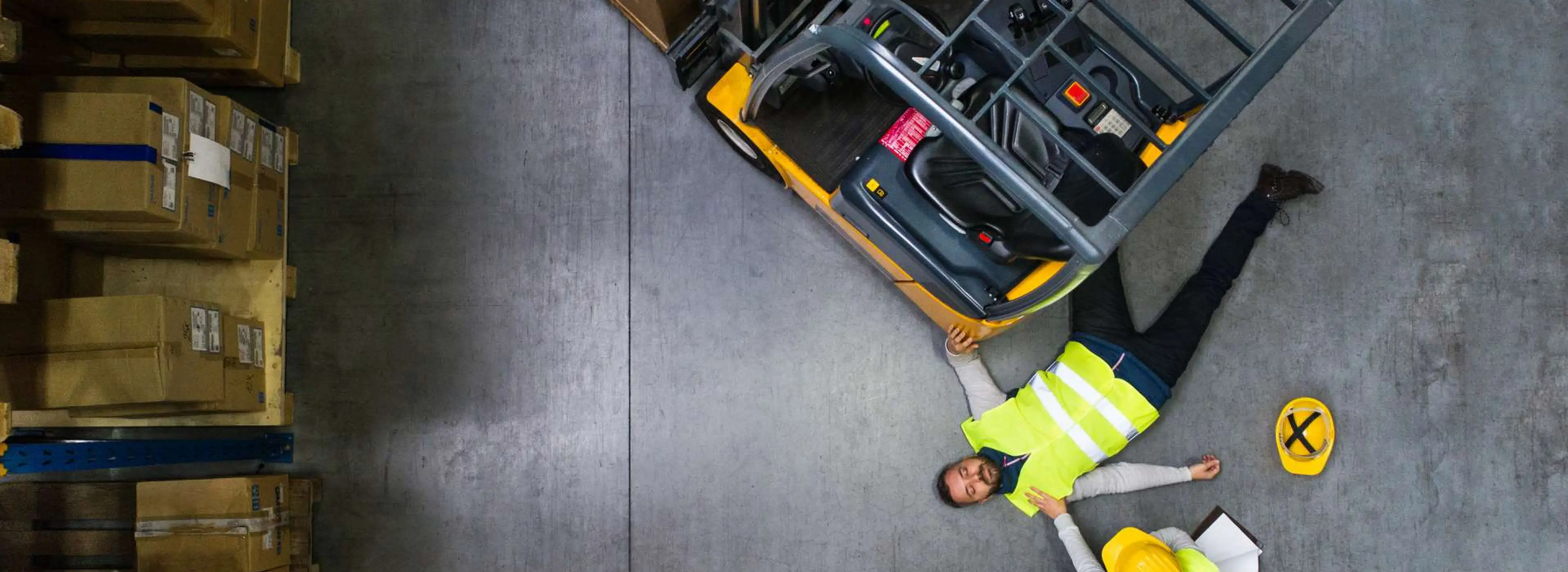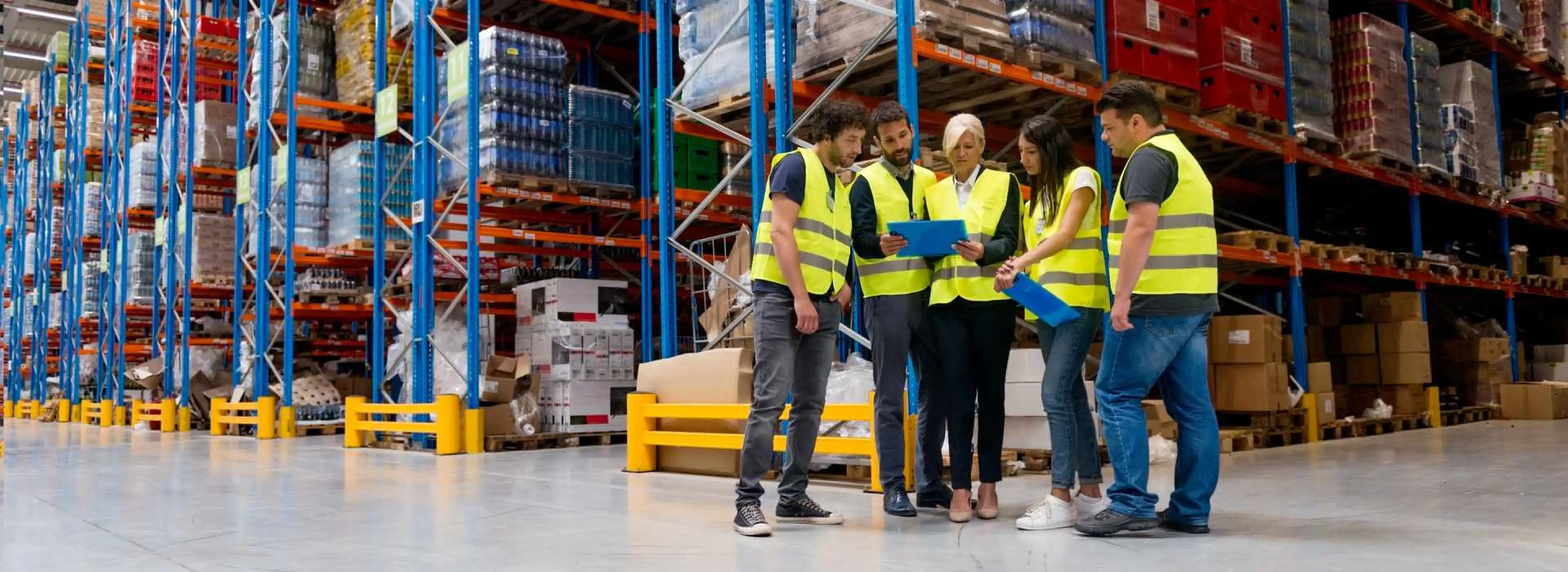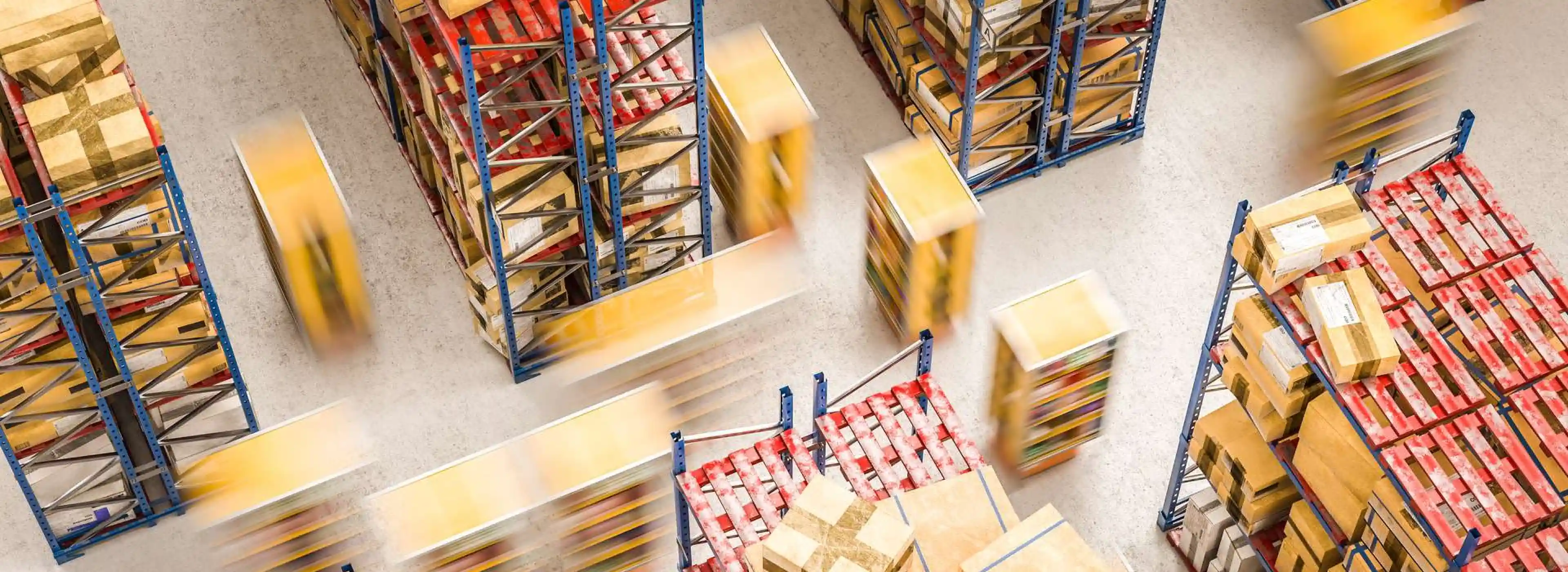If you want to learn more about warehouse digitalization and optimizing warehouse processes, you can follow us on LinkedIn, YouTube, X, or Facebook. If you have other inquiries or suggestions, don’t hesitate to contact us here. We’ll be happy to hear from you.
Warehouse safety is one of the biggest concern faced by warehouse managers and their employees. This worry stems from warehouse industry workers sustaining many injuries and fatalities, with an average of 19 fatalities per year (2015-2018). These statistics can be brought down significantly if warehouse safety is treated as a priority.
Click Here: Increase Your Warehouse Efficiency With This Advanced and Affordable WMS
So, in this article, we will be discussing the most common workplace injuries that a worker can face, safety tips to prevent injuries in the warehouse, and first-aid tips in case of an injury.
Common Workplace Injuries
The first step to boosting warehouse safety is understanding common workplace injuries and what’s causing them. The following are the most common causes of these injuries:
Heavy Equipment Accidents
Heavy warehouse equipment such as forklifts and heavy pallets are the leading cause of injuries and sometimes even fatalities in the warehouse. Workers run a risk of being hit or run over by forklifts, falling between the trailer and the lift, or falling from an elevated platform. These accidents usually take place due to a warehouse being crowded, inadequate forklift safety training, or just by chance. To prevent such accidents, it is important for storage facilities to have proper safety protocols in place for the use of forklifts and other heavy equipment.

Slips, Trips, and Falls
The majority of the injuries in the warehouse comprise slips, trips, and falls. The cause of such incidents can be slippery or uneven floors and accumulation of debris, residue, grease, or cords lying in walking areas.
Exposure to Chemicals
A number of warehouses store hazardous chemicals or use them for production purposes. Accidental spills, sadly, cannot be prevented from happening. These chemical leaks and spills can be a threat to the safety of warehouse employees.
Being Hit by Falling Objects
There is always a massive risk of stacked items falling from the shelves at any point. These types of injuries are caused by incompetent operations setup and human error.
Machine Entanglement
The most severe injury that can happen in a warehouse is machine entanglement. This type of injury occurs when employees get entangled with dangerous and large equipment while working.
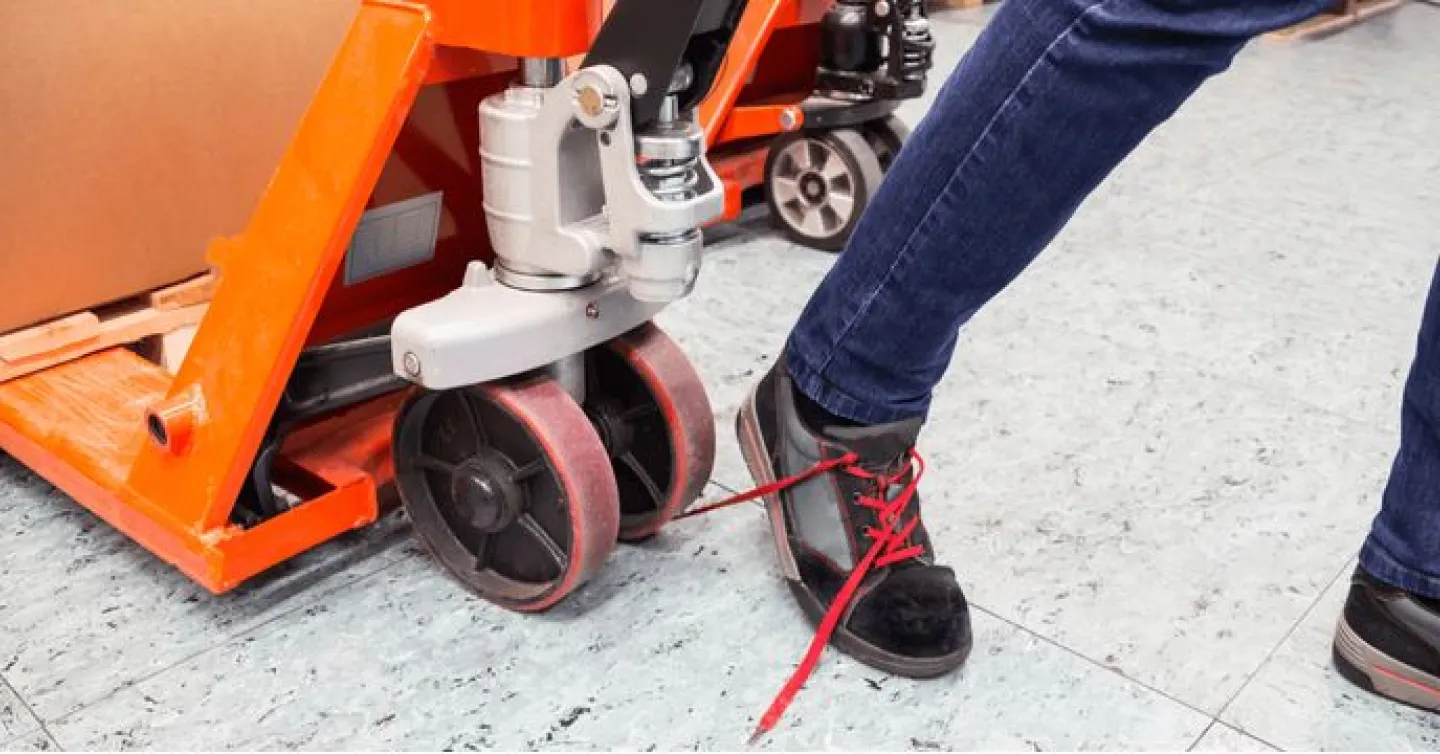
10 Warehouse Safety Tips
Warehouses are required to implement a safety plan, but safety doesn’t end with implementation. It’s also paramount that the execution of the safety procedures is done well.
This section covers some tips to prevent the aforementioned injuries:
1. Ensure Safety Equipment is Always Used
It is vital to use safety equipment such as forklifts or hydraulic lifts to raise bulky products to prevent major back injuries.
2. Eliminate Potential Safety Hazards
It is important to ensure that floors are free of slip and trip hazards. It is also vital that the staff understands the importance of good housekeeping. There should be regular checks on any stray cords, liquids, accumulated debris, cracks, and pits on the floor. These can cause severe injuries to employees and damage valuable machinery and cargo.
3. Identify and Mark Hazardous Zones Clearly
Signs and stickers are the most cost-effective and functional way of keeping your warehouse organized and safe from hazardous situations. Labeling racks, equipment, and materials clearly can help workers prevent serious injuries. Also, it’s important that emergency exits and the safest routes to them are clearly marked.
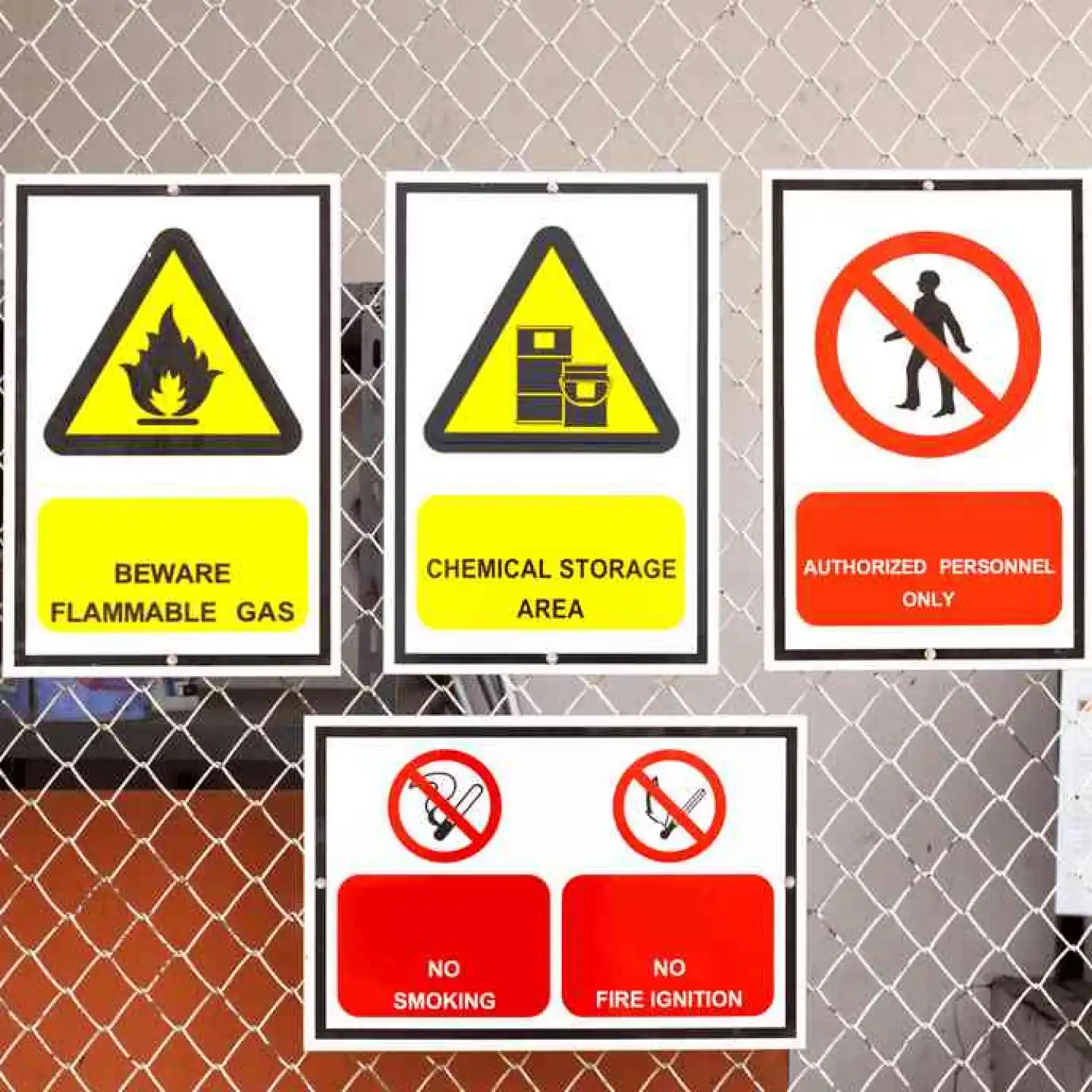
4. Provide Proper Training and Courses
Providing staff with adequate training about warehouse safety processes can ensure that they are aware of the consequences of an unsafe workplace. It can also encourage people to follow procedures more closely.
5. Proper Clothing Should be Worn
Loose-fitting clothes should be avoided as they can get caught in the machinery or pallets, which can lead to injuries. Also, wearing protective clothing, including hard hats, gloves, vests, masks, and eye-wear is another valuable tip to ensure the safety of the workers in the warehouse.
6. Promote Awareness
Promoting awareness about any potential safety hazards and alerting colleagues of passing machinery, such as forklifts, can drastically reduce accidents. This can be achieved through constant communication among employees.
7. Shelving Safety
It is essential to assess how much weight a rack can endure and how the materials should be stacked to achieve effective distribution. This prevents workers from getting injured from falling objects.
8. Vehicle Safety
Whether you work with forklifts or lift trucks, vehicle safety is essential to preventing crush injuries. This can be done by ensuring workers are provided proper practical training about maintaining speed limits, avoiding reversing whenever possible, and being aware of blind spots. It’s also important to enforce a zero-tolerance policy about reckless driving.
9. Carry Out Fire Safety Drills
Fire and smoke alarms should be tested on a regular basis. Drills help you check if these alarms work and also with creating and updating a safe evacuation and emergency plan. Ensuring the installation of emergency lights can go a long way in making sure staff safely evacuates.
10. Ventilate
A crucial part of a safe warehouse is good ventilation, but it is usually overlooked by employers. Limited air circulation can lead to stagnation of fumes and vehicle exhaust in the warehouse, which can hinder both employee comfort and safety. Putting in exhaust fans and alarms for carbon monoxide can help optimize warehouse environmental conditions and prevent carbon monoxide poisoning. Air circulation must also be designed to remove contaminants from indoor air and allow air to circulate within the facility for better humidity and temperature control.
Proper First Aid in Case of an Emergency
No amount of warehouse safety tips can eliminate the possibility of injuries completely. Hence, performing the right first aid is essential when an incident occurs. Every employee should be trained in giving first aid since it could save someone’s life.
First Aid Kit Requirements
The Occupational Safety and Health Administration (OSHA) requires the following items for a first-aid kit:
- Adhesive bandage and tape
- Medical gloves
- Antibiotic application
- Roller bandage (2 and 4 inches)
- Antiseptic
- Scissors
- Burn dressing
- Splint
- Cold pack
- Sterile/Trauma pads
- Eye/Skin wash
- Tourniquet
- First aid guide
- Triangular bandage
- Hand sanitizer
Basic First-Aid Procedures
The following tips are based on the procedures recommended by the American Heart Association and American Red Cross:
Cardiac Arrest:
- Have someone call 911 or a local medical alert system.
- Start chest compressions immediately. Compress hard and fast at the center of the chest while allowing recoil in between.
- Use chest compressions and rescue breathing if trained.
- An automated external defibrillator (AED) needs to be used in between compressions.
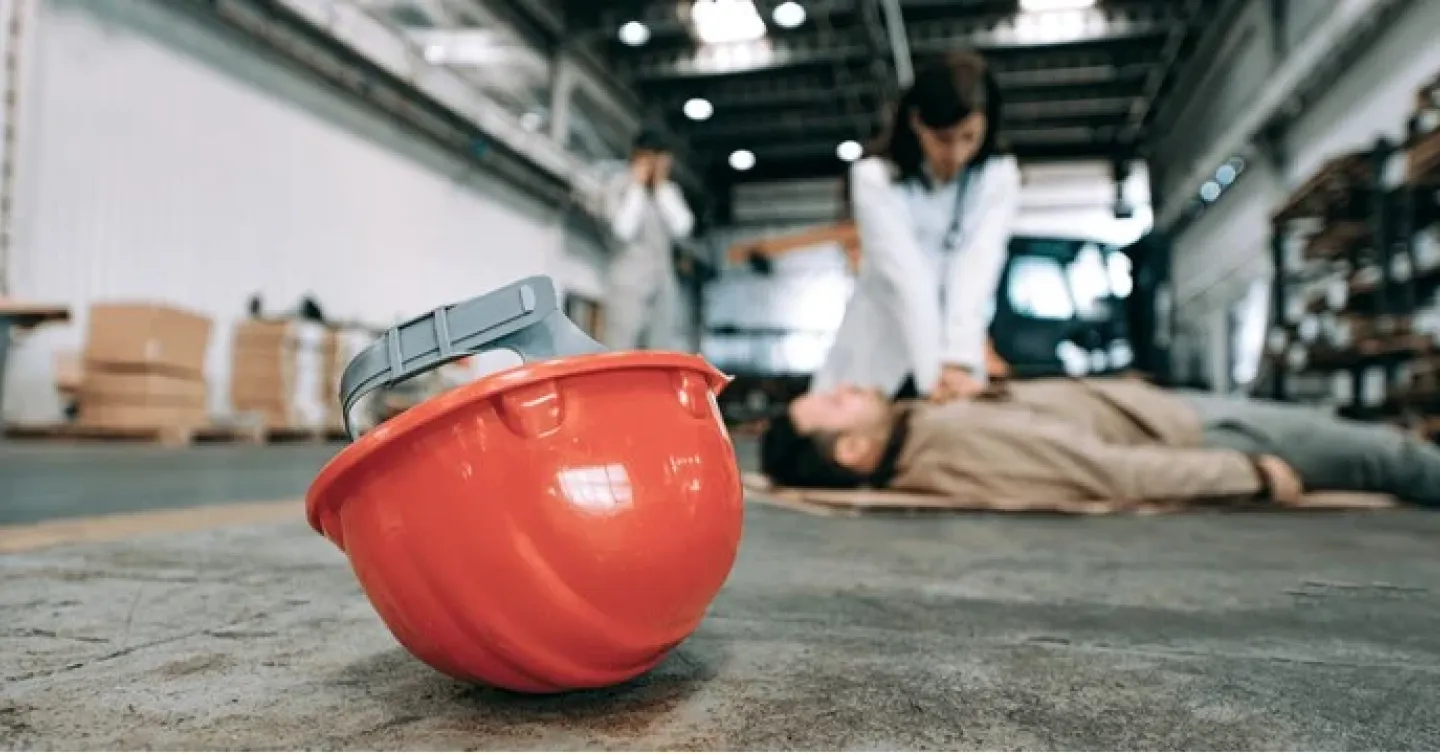
Crush Injuries:
- Call 911 or a local medical alert system.
- Stop bleeding by applying direct pressure.
- Use a wet cloth to cover the affected area, and raise it above the heart level.
- If the injury is affecting the head, neck, or spine, immobilize those areas if possible and limit movement of the crushed area.
Fractures:
- Call 911 or a local medical alert system.
- Do not try to straighten it.
- Stabilize the affected area using a splint and padding.
- Put a cold pack on the injury (avoid direct ice on the skin).
- Elevate the extremity.
- Anti-inflammatory drugs like ibuprofen should be provided.

Bleeding:
- If the wound is deep, have someone call 911 or the local medical alert system.
- Use gauze or cloth to cover the wound and apply direct pressure.
- Don’t remove the cloth until the bleeding stops.
- Add more layers if need be.
- Visit the emergency room (ER) in case of a deep wound.
Burns:
- Depending on the severity of the burn, have someone call 911.
- Meanwhile, flush the burnt area with running cool water for several minutes to soothe and cleanse the burn.
- Apply a light gauze bandage.
- Don’t apply ointments to the burn.
- Take painkillers, if necessary.
- Do not break any formed blisters.
Summary
Working in a warehouse without proper safety measures and procedures can be dangerous. But with the correct safety measures in place, these incidents can be drastically brought down. It helps to have basic knowledge about common workplace injuries in warehouses, how to prevent them, and first-aid procedures in case of an injury. Warehouse operators should prioritize safety by implementing proper training programs, regularly inspecting equipment and facilities, and adhering to relevant regulations and standards. By doing so, the risks of unsafe warehousing can be mitigated, and the safety of employees can be ensured.
Besides putting correct safety measures in place, you can also implement solutions that can improve warehouse safety and efficiency. Visit our solutions finder tool to know more.
